The Valet Chair is a functional sculpture that applies the traditional function of a valet stand to an elaborately crafted wooden chair. The back leg is carved in shape to offer both a comfortable backrest and a proper hanger for a jacket or a coat.
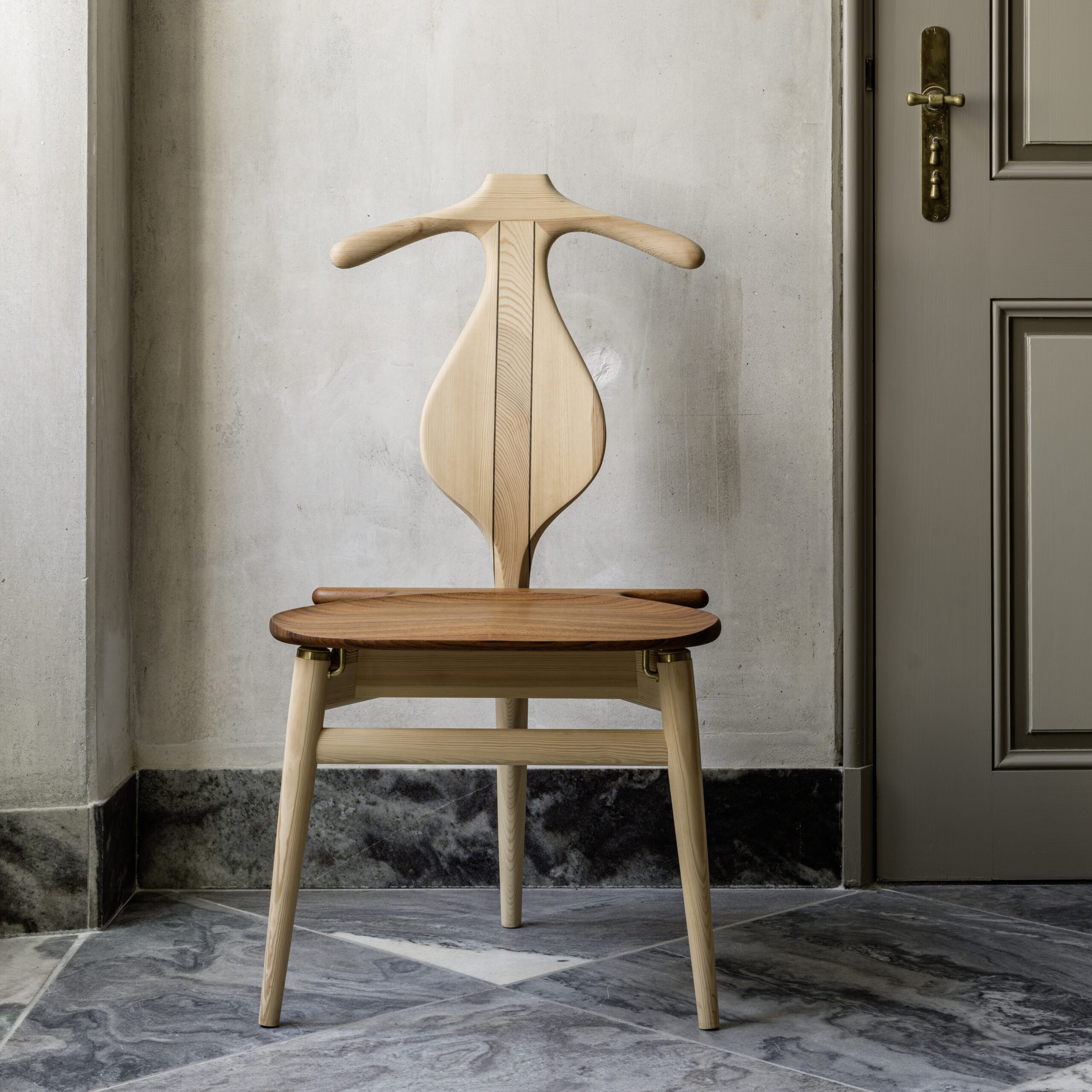
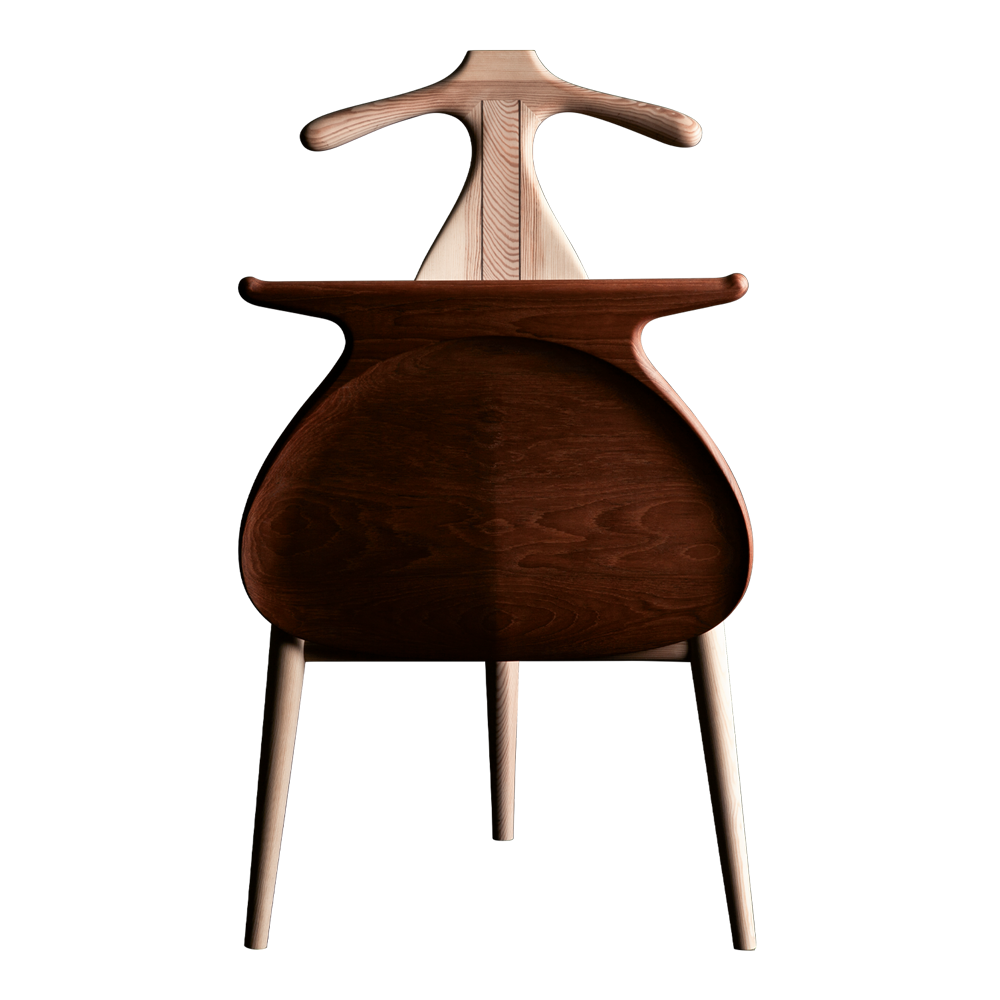
The seat is sculpted to provide a comfortable sit and hinged to allow for an upright position on which additional clothes can be placed.
Opening the seat reveals a small storage compartment for personal belongings.

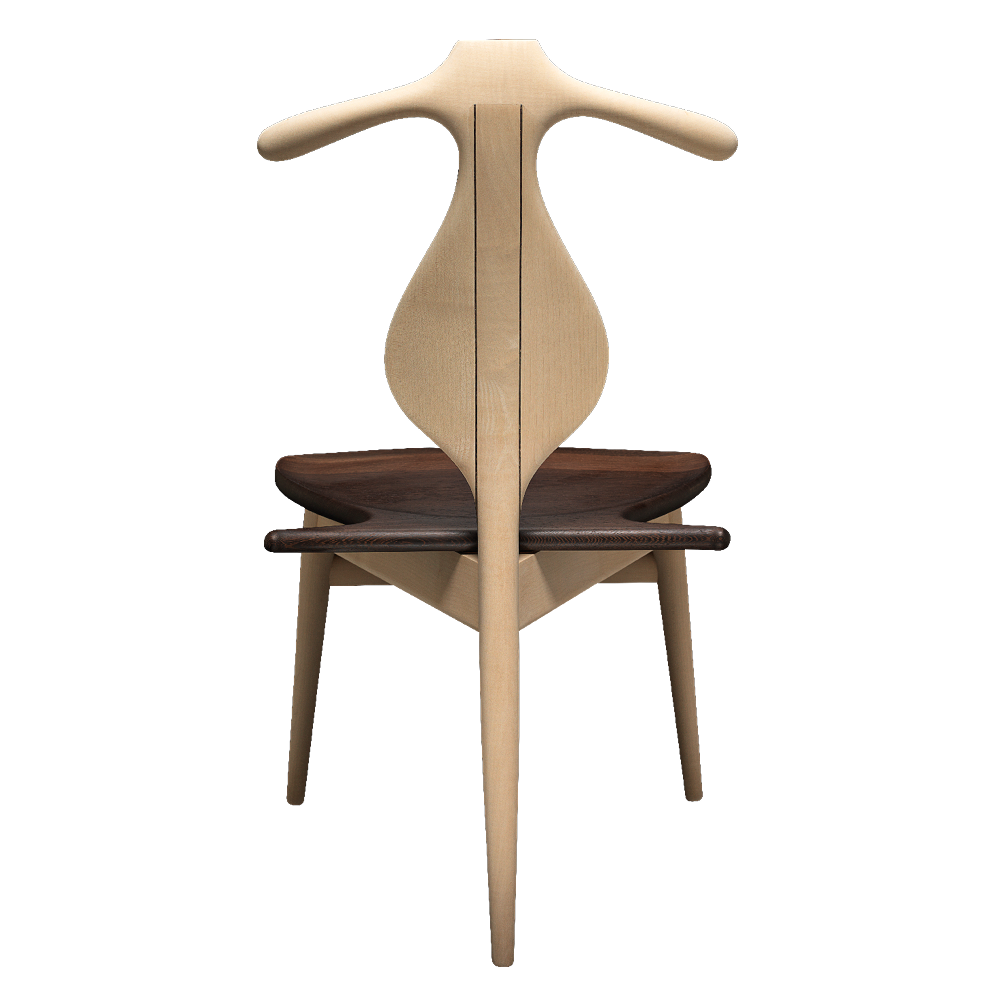
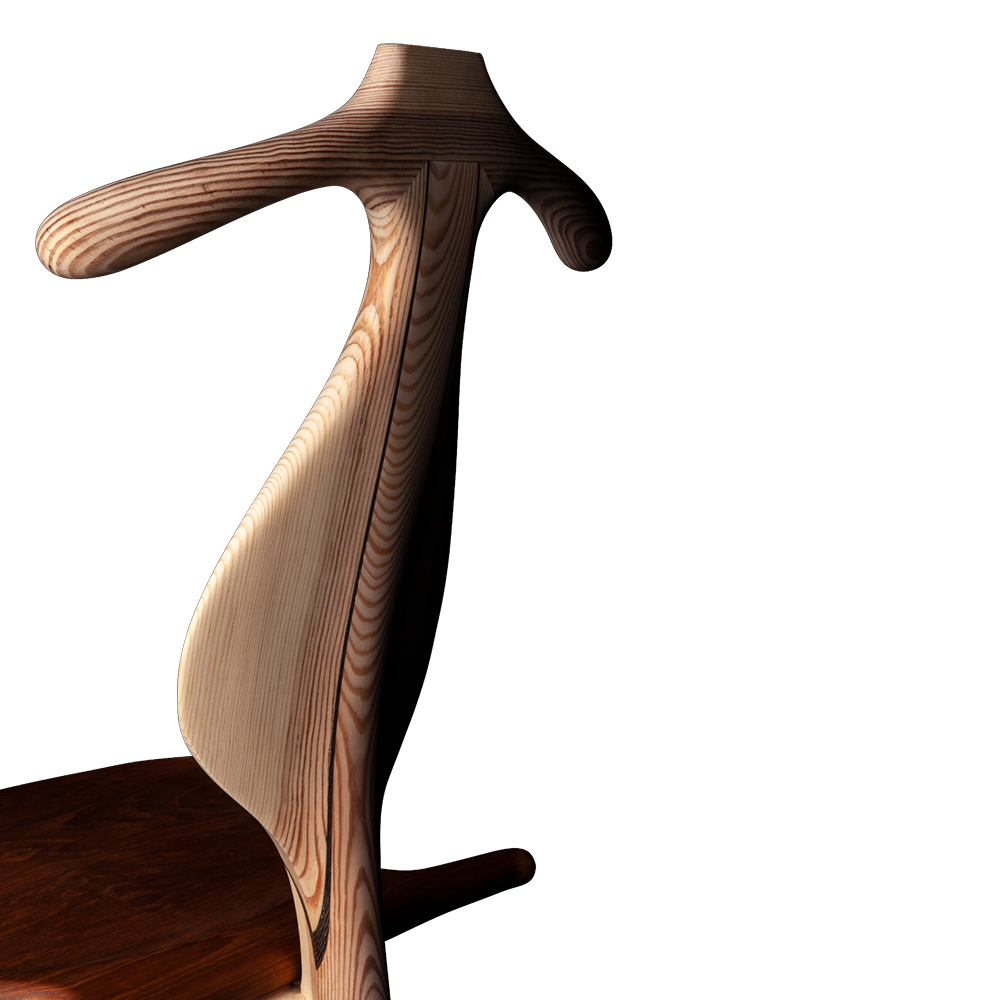

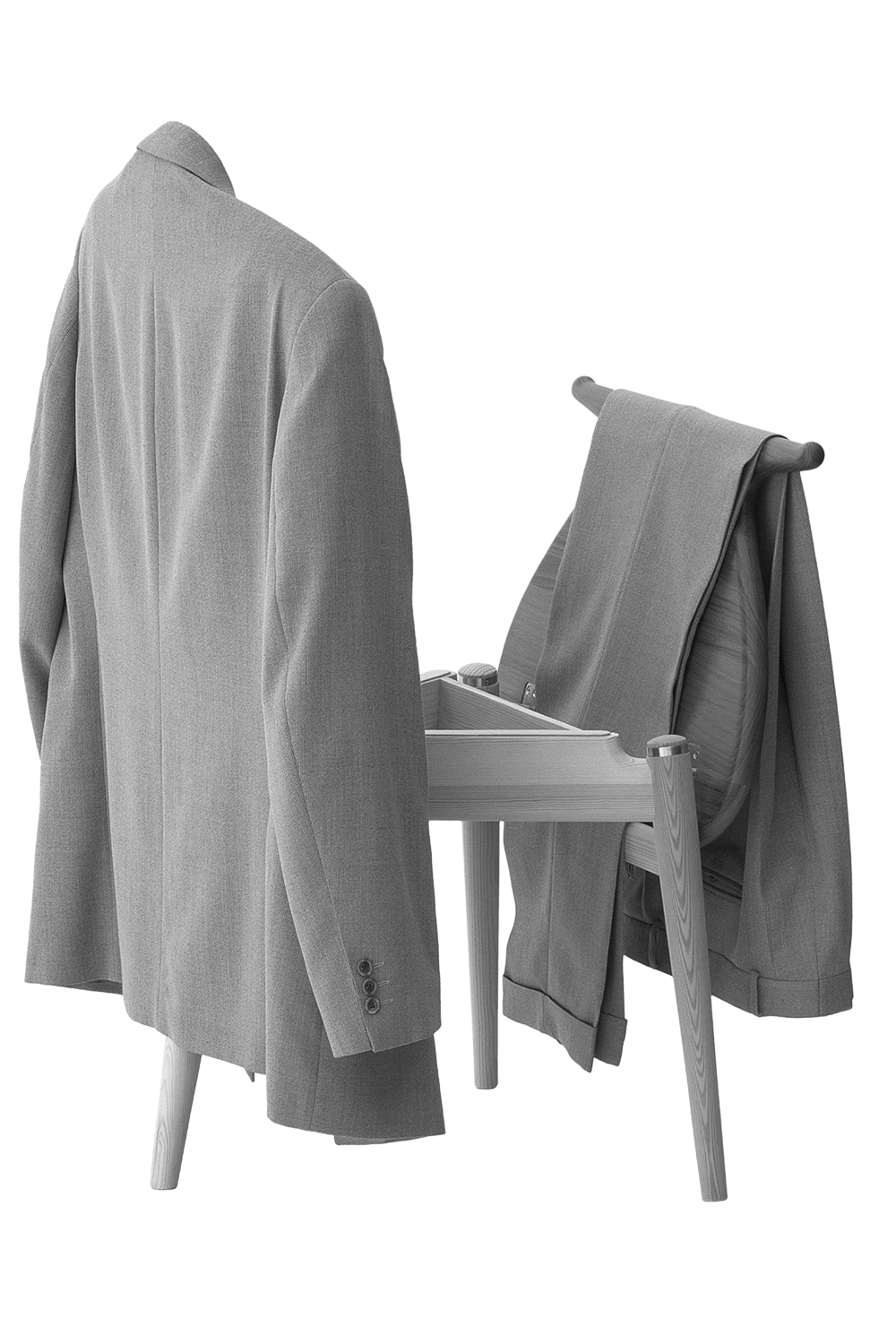

The back of pp250 works as a hanger for a jacket. The seat is hinged and can be placed in an upright position so the trousers can be neatly folded. Underneath the seat is a storage for items such as keys, wallets, etc.
The pine version comes with a teak seat. The oak version has optional oak, wengé or teak seat, and the maple version has optional maple or wengé seat.
Joint details: wengé wood
Hinges in brass
Felt pads (optional) available in: white, black, gray, light brown and dark brown
Wegner came up with the idea for the Valet Chair in 1951, following a long talk with Professor of Architecture Steen Eiler Rasmussen and designer Kay Bojesen about the problems of folding clothes in the most practical manner. Following the inspiration he had gotten from the two renowned designers, Wegner began designing the perfect bedroom chair. However, the process of completing the design was not initiated before the Danish King Frederik IX ordered one after seeing the first four-legged version.
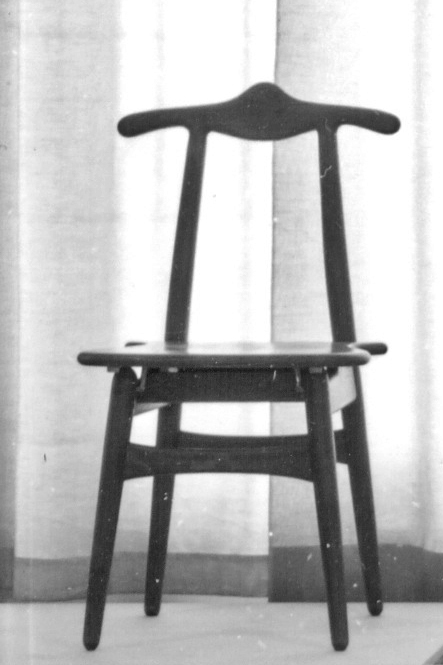
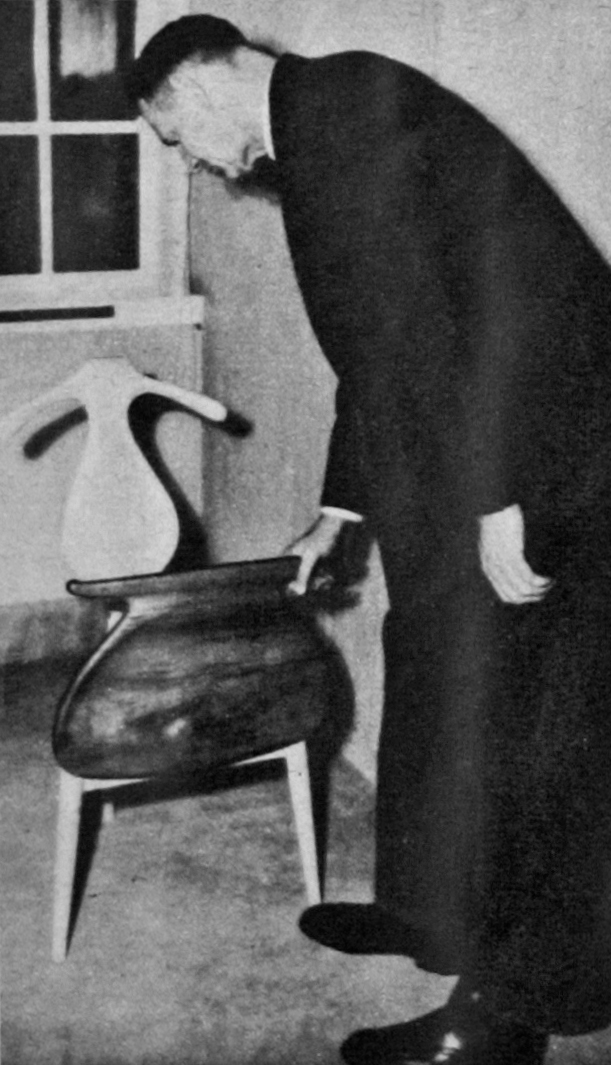
Wegner was dissatisfied with the four-legged version and continued working on the design for two years, before the King could finally receive his chair.
By then the three-legged version had been created and made for the King in pine with a teak seat. Wegner wanted to show the King what an extraordinary beautiful chair he could make in even the cheap pinewood. Teak was used for the seat to stretch the exclusivity of the design. Thoroughly satisfied, the Danish King ended up ordering a total of ten Valet Chairs.
